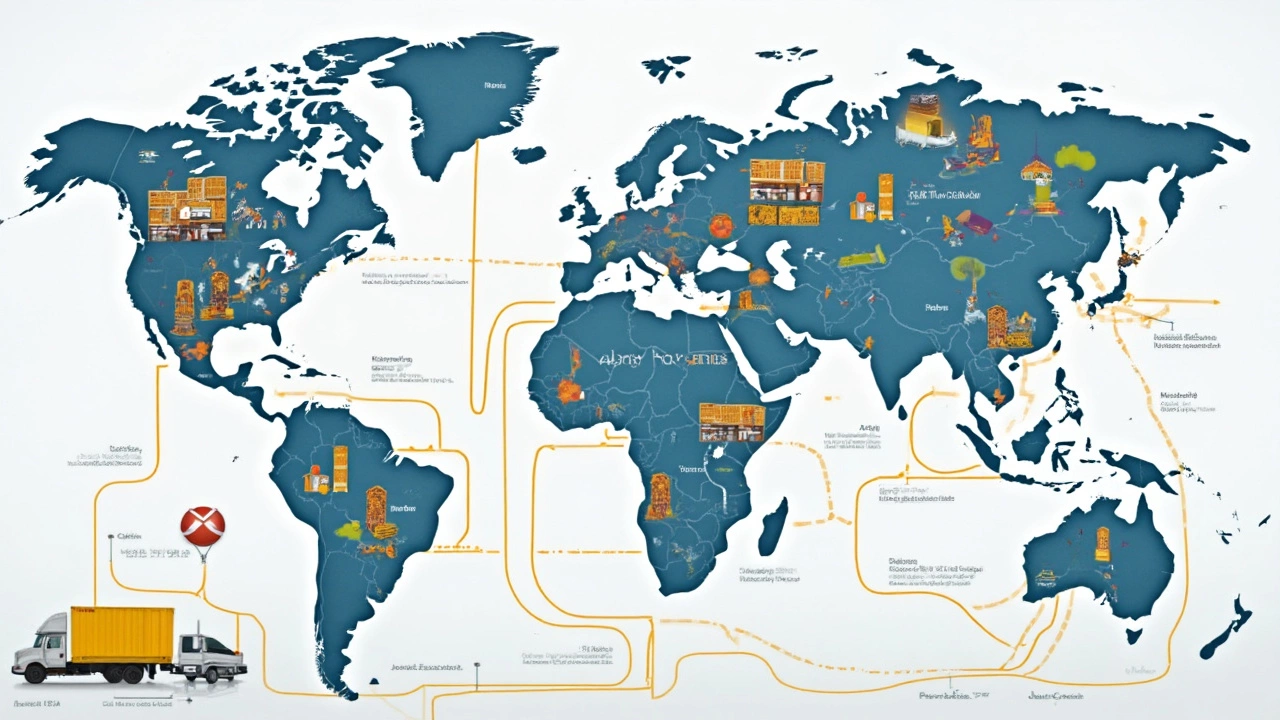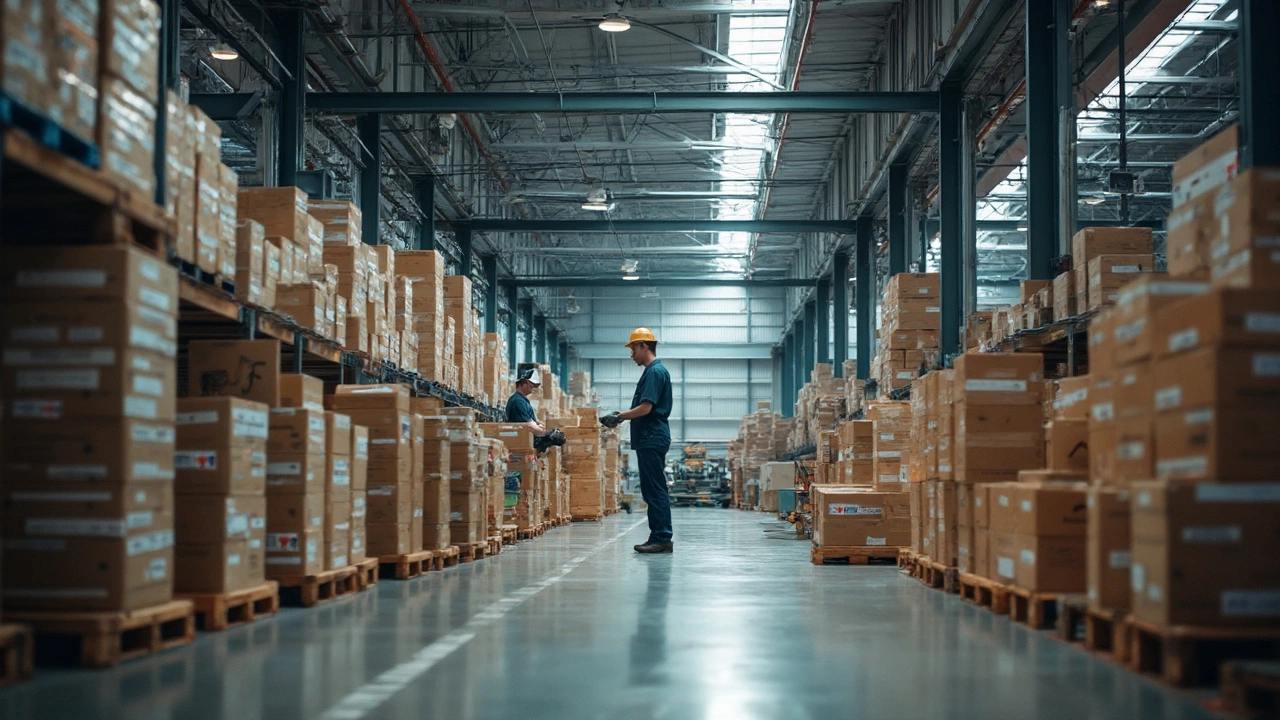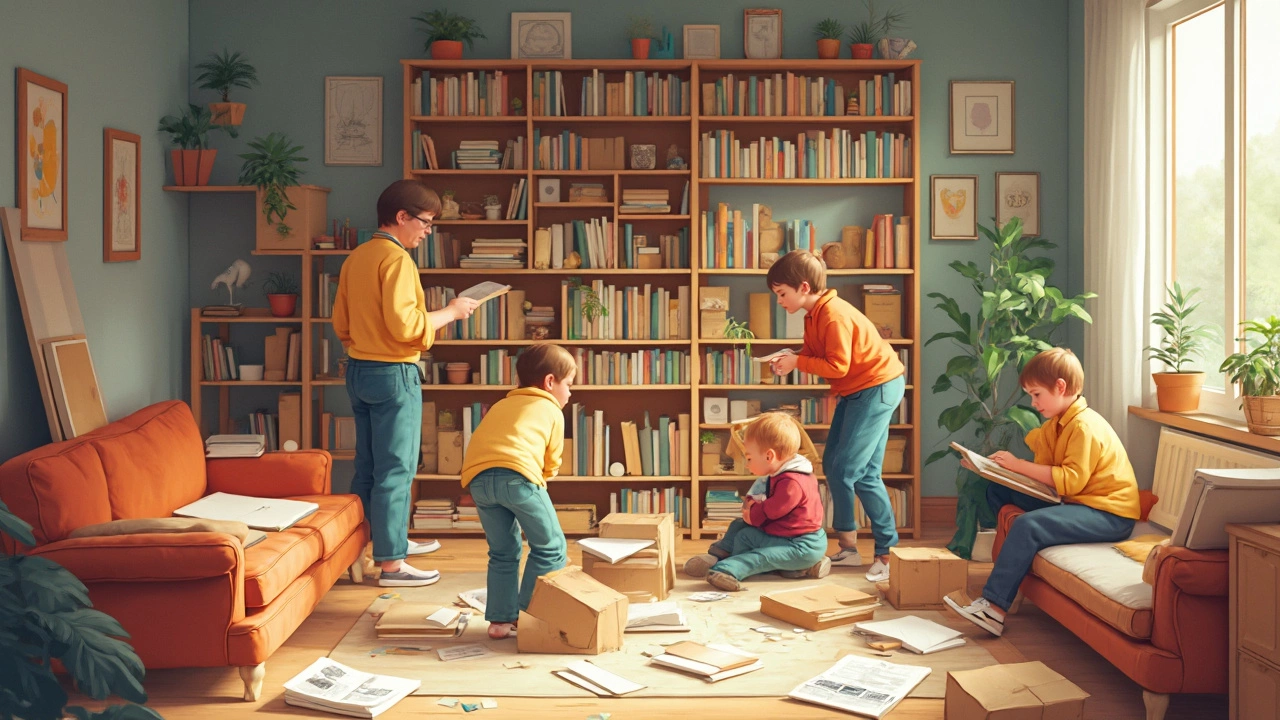Ever stand in front of a mountain of flat-pack boxes and wonder where they all come from? IKEA bookcases pop up in homes all over the world, but very few shoppers actually know which countries churn out those popular BILLY shelves or KALLAX cubes. Turns out, there's real value in understanding where your furniture is made—not just for bragging rights but for better picks and even smarter spending.
The classic BILLY bookcase is a best-seller for a reason—modular, affordable, and surprisingly sturdy for the price. But the story behind your bookcase starts way before it hits the showroom floor. IKEA runs a web of factories and suppliers, but here's the kicker: most furniture isn't made in Sweden. In fact, the biggest production hubs are in countries like Poland, China, and a handful of Eastern European nations. You’ll spot a ‘Made in’ label somewhere if you look close enough, usually hidden in the packaging or on the underside of a shelf panel. Knowing how to spot those details actually helps you figure out which factories have the best track record for consistent quality.
- The Backbone of IKEA's Global Production
- Key Countries Making IKEA Bookcases
- Material Choices and Sourcing Secrets
- How Manufacturing Location Affects Price and Quality
- Smart Shopping Tips: What to Look for in IKEA Bookcases
The Backbone of IKEA's Global Production
People talk a lot about IKEA’s weird furniture names, but let’s get real—the thing that keeps IKEA rolling isn’t catchy branding, it’s a supply chain built like a machine. Behind every IKEA shelf is a huge network with more than 1,600 suppliers in about 50 different countries. This whole operation is what lets them churn out affordable bookcases and still keep prices way lower than local shops.
Today, IKEA furniture manufacturing doesn’t happen much in Sweden at all. Sweden is home to the brand’s roots and original designs, but when it comes to making stuff like bookcases, the action shifts. The real muscle is in Poland, China, and other Eastern European countries. Poland alone cranks out almost 20% of all IKEA products around the world. That’s a big chunk, and it’s no accident—labor costs are lower, and the factories can scale up fast to meet massive global demand. China, too, handles a huge share, especially on the budget lines and some of the more complicated shelving frames.
Here's a fun data snapshot:
| Country | Share of IKEA Global Production (%) |
|---|---|
| Poland | ~20% |
| China | ~18% |
| Italy | ~8% |
| Lithuania | ~5% |
| Sweden | <5% |
A lot of folks think everything gets built in one place and shipped everywhere. Not really. Most bookcases are actually made in the country closest to the market. That keeps shipping costs down and shortens delivery times. The parts might get sourced from different places, but final assembly and packaging happen as close to the buyer as possible. This also means if you’re in the US, your bookcase might be built in a totally different country than one sold in Germany.
The company’s supply chain is constantly changing, too. They’re always hunting for ways to trim costs without cutting corners on quality. If there’s a new, more efficient way to make a shelf or a smarter deal for wood, they’ll switch things up. That’s why you’ll sometimes notice small design changes or production labels changing from year to year.
Key Countries Making IKEA Bookcases
If you're picturing some Swedish craftsman hammering out your IKEA bookcase, well, that's not how it goes down. The real action happens in places you might not expect. The biggest hub by far is Poland. In fact, around 20-25% of all IKEA furniture—including loads of bookcases—comes straight out of Polish factories. If you check those labels closely, 'Made in Poland' is probably what you'll see on a BILLY, HEMNES, or KALLAX.
China is another powerhouse in the IKEA furniture manufacturing world. Cheaper labor and massive production lines let them make millions of flat-pack pieces every year. China often produces smaller bookcases or components, because they're pros at mass-producing at scale and keeping cost low.
Romania and Lithuania both stand out, but for different reasons. Romania usually cranks out solid wood pieces—think HEMNES rather than the BILLY’s particleboard. Lithuania is known for its solid engineering and for handling lots of basic shelving.
Here’s a quick breakdown of where most bookcases come from:
| Country | Main Role in Production | Percentage of IKEA Furniture |
|---|---|---|
| Poland | Major production of bookcases and storage units | 20-25% |
| China | Large-scale manufacturing of various furniture types | 10-15% |
| Romania | Solid wood bookcases, traditional models | 5-6% |
| Lithuania | Engineering, basic shelving | 2-3% |
Every once in a while, you’ll spot a bookcase from Slovakia, Turkey, or even Portugal, but these are usually for special lines or limited runs. Most stores stock whatever is cheapest and closest, which is why European-made bookcases flood European IKEA stores, while Asian factories supply Asian markets.
If you have a specific model in mind, you can even find online forums where folks share their bookcase’s country of origin. Keep an eye out for those details—they sometimes point to small differences in things like lamination or final quality. When you know where your IKEA bookcase is made, you’re already shopping smarter.

Material Choices and Sourcing Secrets
If you’ve ever wondered how IKEA manages to keep prices so low on those famous bookcases, the answer is squarely in their choice of materials. They rarely use solid wood for their big sellers. Instead, most IKEA bookcases are built from particleboard or medium-density fiberboard (MDF) with a thin wood veneer or plastic finish on the outside. This combo keeps manufacturing costs down, keeps furniture light, and helps with mass production.
Poland is the MVP here—it produces about 20% of all IKEA furniture worldwide, and a ton of that is bookcases. Why Poland? Cheap labor, easy access to wood, and factories that have IKEA’s system down to a science. China comes in close for the same reasons, providing lots of lower-priced models using their own local materials.
If you’ve looked closely at the panels on your BILLY or KALLAX, you’ll probably notice how light they are. That’s because IKEA uses honeycomb paper filling inside some bookcase shelves and sides. Think of it like a cardboard lattice sandwiched between two thin outer layers—it’s super lightweight and surprisingly tough. This design saves tons on shipping. Here’s a quick look at the main materials you’ll run into:
- Particleboard made from wood chips and resin
- MDF—denser than particleboard, still no solid wood
- Plastic laminates or wood veneer for finish
- Honeycomb paperboard (especially for bigger, thicker panels)
For folks who worry about sustainability, IKEA has made real moves here. According to their own 2024 sustainability report, about 98% of their wood now comes from renewable sources. Plus, they use recycled wood in more bookcases every year. Still, if you want a ‘real wood’ feel, you’ll have to really dig—it’s just not the norm unless you splurge for the pricier lines.
Here’s where it gets interesting. The exact material makeup and finish can even vary between countries or factory batches. Want to make sure you’re getting a sturdy model? Check the product label for thickness and pay attention to reviews from buyers in your country. Not all furniture manufacturing standards are created equal, and you don’t want wobbly shelves holding your prized book collection.
How Manufacturing Location Affects Price and Quality
You probably think all IKEA bookcases are more or less the same—same price range, same quality, just pick a color and go. But where your bookcase is made can actually change things up more than most people realize. Production costs, raw materials, and even quality control can flip based on the country printing that “Made in” sticker.
Let's break it down. Countries like Poland and other parts of Eastern Europe have become big players for IKEA furniture manufacturing simply because labor and material costs are lower than in Western Europe or North America. More factories, faster production, and cheaper shipment routes help keep prices down for popular models like BILLY and KALLAX. In fact, for bookcases, Poland often accounts for about 20% to 25% of IKEA’s global output. When you see a price that feels like a steal, it often links back to these supply chain choices.
China is another heavyweight. It’s a top spot for particleboard production and flat-pack furniture, thanks to efficient manufacturing setups and massive output capacity. Chinese factories can push out huge volumes, which cuts costs but can mean quality varies more from batch to batch compared to smaller operations in Europe.
Some people swear older, Western European-made shelving feels thicker and sturdier. That's not entirely wrong—earlier production runs sometimes used denser boards and more strict quality checks. Today, the focus is on standardizing quality across the board, but you’ll still spot the occasional difference if you put two units side by side. For example, you might notice slight variations in color or edge finish between a bookcase made in Poland and one from China.
Here’s a quick look at how country of origin stacks up for price and quality when it comes to IKEA bookcases:
| Country | Price Impact | Quality Notes |
|---|---|---|
| Poland | Usually on the lower side | Consistent quality, decent finish |
| China | Lowest cost for large runs | Occasional variance in edge sealing, lighter panels |
| Sweden/Eastern Europe | Mid to higher price | Often slightly heavier, tighter quality checks |
If you want maximum value, check those labels and give panels a quick tap—the denser the sound, the thicker the material. And remember: location isn’t the only factor, but it’s the quickest clue for what you can actually expect out of your next IKEA bookcase.

Smart Shopping Tips: What to Look for in IKEA Bookcases
So you're scanning the aisles or scrolling through the website, drowning in choices. Want a bookcase that actually lasts? Here’s how to get the most out of your IKEA bookcase shopping trip, with some real tricks from people who’ve battled the hex key wars and won.
- Check the manufacturing country: Flip a shelf or look under the packaging for the “Made in” label. Poland is known for consistent build quality, especially for BILLY and KALLAX. If you spot “China” or “Russia” on the label, you’re still in good hands, but quality can be a notch different. Major IKEA furniture manufacturing hubs produce in giant volumes, so double-check edges and holes for clean cuts.
- Pay attention to materials: The cheap stuff is particleboard with a veneer. It’s light and wallet-friendly, but humidity can warp it. Look for “solid wood” on the product sheet for better durability, even if it means a little extra cost or weight. Birch and pine hold up better if moved around a lot.
- Test shelf stability: In the store, gently press on shelf centers. Sagging means trouble (and it’ll only get worse with weight). Some bookcases have extra support pegs or thicker shelves—worth the few bucks more if you’re loading up with textbooks or records.
- Don’t skip the wall mount kit: IKEA includes these with most tall bookcases, and for good reason. Tipping is a risk, especially with kids or if you go vertical with big sizes like BILLY 80x202cm. Use that bracket—and always pick a bookcase that’s got it in the box.
- Look up the extra options: Adjustable shelves, glass doors, or drawer add-ons can turn a basic shelf into something that fits your life. KALLAX and BILLY both have a bunch of modular pieces. IKEA swaps out finish options and accessories every year, so grab add-ons when you buy the main system or save the product code for future finds.
Here’s a quick snapshot of which countries produce the bulk of IKEA bookcases and the models you’ll most likely find from each:
| Country | Common Models Made |
|---|---|
| Poland | BILLY, BRIMNES, KALLAX |
| China | KALLAX, MALM, LACK |
| Russia | BILLY, HEMNES |
And a bonus: sign up for IKEA Family before your visit. You’ll get member pricing (sometimes up to 10% off) and early alerts on new stock or major sales—handy when your dream bookcase suddenly goes out of stock for a month. Hope you find a shelf that can take the weight—literally.


Write a comment